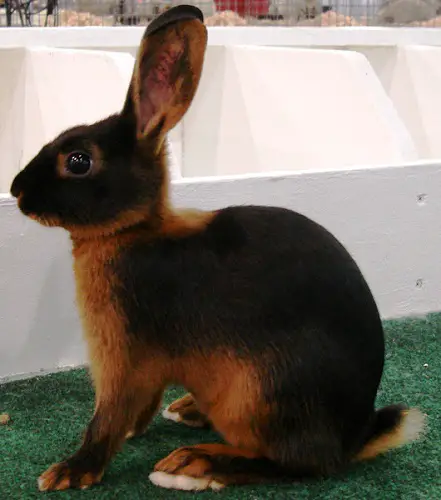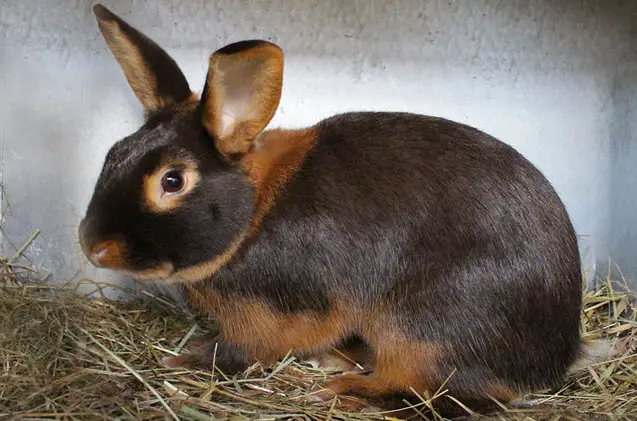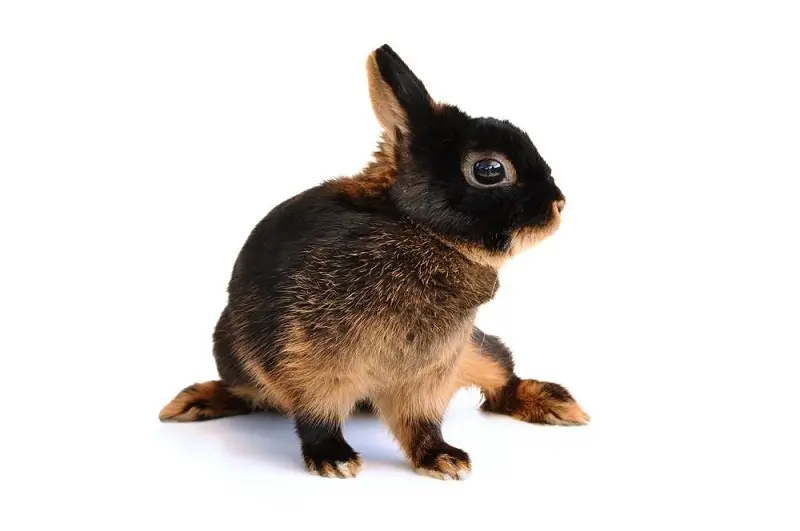Last Updated on May 12, 2023 by
Contents
- 1 What is a Tan Rabbit?
- 2 Colors and appearance of Tan Rabbits
- 3 Breeds of Tan Rabbits
- 4 Characteristics of Tan Rabbits
- 5 Behavioral Patterns of Tan Rabbits
- 6 Tan Rabbits as pets
- 7 How to care for your Tan Rabbit
- 8 What do Tan Rabbits eat?
- 9 Health and Hygiene of Tan Rabbits
- 10 Do Tan Rabbits need cages?
- 11 Conclusion
What is a Tan Rabbit?

Tan rabbits are a specific type of rabbit that is not well known.
The origin of Tan Rabbits can be traced back to the 1600s in Europe, where they were bred for their fur and meat.
Today, they have become popular pets because they make wonderful companions. They are also very social animals who like to interact with humans and other animals alike!
In this article, we will discuss some facts about Tan Rabbits such as what they look like, how much space they need in the house or apartment, how much food they eat per day, etc.
Colors and appearance of Tan Rabbits

The Tan Rabbit is known for its coloration; it is usually brown or gray with white paws and feet. Some also have faded spots on their underside, which gives them an even more unique appearance!
They typically have colors such as
- Beige
- Tan
- Buff-colored with a brownish tint
There may also be yellowish stains on the ears and feet of these rabbits.
Tan rabbits come in a wide variety of colors from whitewashed to brown to blue-eyed, but they are all mostly white underneath the dark hair and have dark ears, feet, nose, and tail.
The only color on a typical one that doesn’t vary much is the eye color which can range from deep brown to bright orange or gold.
Breeds of Tan Rabbits
Their breeds are usually classified according to their ear and eye shapes.
The long-eared Tan Rabbit is one of the more well-known breeds.
The Long-eared Tan Rabbit
Long-eared Tan Rabbits are known as the Siamese Rabbit, or simply a “Siamese”.
These rabbits have long ears that come up over its head in an often floppy fashion. They also tend to be more slender than other breeds of rabbits with large eyes and shorter noses.
According to some sources, these rabbits were originally bred by German breeders from Himalayan stock which had been imported into England from China around 1880.
At the same time, the breeds come in three sizes:
- Small (under 350g)
- Medium-sized (350 to 600 grams)
- Large size (> 600 grams).
Characteristics of Tan Rabbits
Tan Rabbits are actually pretty large in size, so they’re not the tiny little bunnies you might be used to.
They can weigh up to 22 pounds and have a body length of about two feet long.
Their fur patterns vary depending on their breed but are usually some shade of brown or grey with white markings around the eyes and ears.
They are considered to make very good house pets and they give affection readily.
They’re usually introverted but will come out of their shell in the presence of friends.
They’re generally shy around strangers which makes them difficult to get close to so it’s important that you establish contact early on with a Tan Rabbit.
These animals tend to live out in the wild or just own a small home with rabbits next door as they don’t require large living spaces as other animals do.
They generally have personalities that follow no set patterns (just like the weather sometimes only lasts for ten minutes).
Behavioral Patterns of Tan Rabbits
Tan Rabbits have interesting behavioral types. They are very social creatures and will often live in large colonies.
When they move, it is usually because of a predator or to find food.
They have an interesting gait where they hop with their back feet first followed by their front paws which gives them great balance when hopping over obstacles like rocks and logs. This adaptation helps them avoid predators.
Tan Rabbits as pets

Tan Rabbits are a relatively new animal that has recently been bred specifically as pets.
They have less fur than other types of domesticated rabbits such as Holland Lops. This means they require more attention to their coats, but grooming them will be easier because it does not take long for the hair to grow back.
Their coat consists mostly of guard hairs instead of soft downy fur like other bunny breeds. So it helps keep them warm during winter months when outdoor conditions may be harsh.
How to care for your Tan Rabbit
You should provide your Tan Rabbit with a cage that is spacious to move around in and has plenty of toys.
Provide them with a soft, comfortable bedding material like straw or hay.
They’re prone to hairballs so be sure they have enough water every day for their grooming needs.
To keep them safe from predators such as snakes, cats, dogs, bugs, make sure you provide an outdoor area large enough for your brown furry friend to feel secure in.
Also, install wiring on the outside of the rabbit’s enclosure to discourage climbing animals.
What do Tan Rabbits eat?
Tan Rabbits are herbivores who will eat nearly any vegetable, fruit, and herb they can find.
They also enjoy grasses like timothy or meadow hay that contain the essential nutrients to keep them healthy.
These breeds in captivity often have a diet rich in grains such as oats because it provides more energy than greens alone.
Health and Hygiene of Tan Rabbits

One of the most important aspects to keep in mind while caring for a Tan Rabbit is their health. A healthy diet, exercise, and regular medical checkups are all essential components to keeping your pet happy.
They should not be fed vegetables such as carrots or lettuce since they have higher concentrations of sugar than other plants.
The environment that you provide for your rabbit also plays an important role in their well-being. They prefer dry ground so it’s best if you use mats instead of water bottles on the floor which can lead to accidents and wet floors.
Do Tan Rabbits need cages?
Tan Rabbits are not typically caged because they can often run around free in the house (unless there are other animals like cats and dogs that may hurt them).
Though they have no problems living in a cage or a hutch. But it’ll be a good idea to create a playpen for them to roam around and play in.
Conclusion
Tan Rabbits are a great pet. They’re cute, low maintenance (in terms of upkeep), and they love people!
I hope this blog post has given you some insight into the benefits of having a rabbit as your companion animal.
